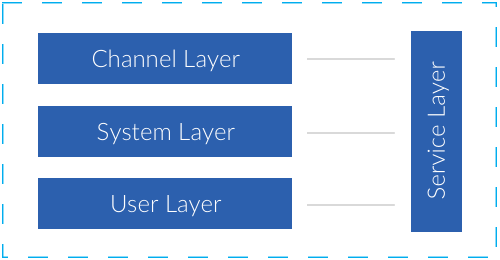INTEGRATED MULTI LAYER SERVICE PLATFORM
telerion™ is an integrated multi- and omnichannel service platform that serves as a base for the implementation of end-to-end and end-to-multi-end scenarios. telerion™ can operate as a cloud-based solution or as a hybrid solution.
The telerion™ architecture is a 100% based on IP standards and supports all carrier-class telecommunication features one might think of. It is composed of four main modules

Channel Layer

System Layer

User Layer

Service Layer
The following shows a basic draft of the architecture’s general structure:


Channel Layer, System Layer, User Layer and Service Layer have been designed to operate in NGN (Next Generation Network), NT (Network Transformation) and NFH (Network Feature Hub) environments. The different layers are interconnected with each other through specific interfaces. telerion™ is a telecommunication solution that serves a large variety of application scenarios. Beyond its already more than complete basic set of features, a series of optional modules are available to meet also the most challenging requirements. While on one hand the system is extremely scalable and user-friendly, on the other the pay-per-use approach offers a very cost-efficient alternative to benefit from the most recent high-end-technologies available on the market without having to replace already existent infrastructure and hardware.
Besides offering smooth and cost-efficient access to high-end technology, telerion™ comes with an additional set of advantages: Global DID coverage, SMS and call termination into the worldwide telephony networks with full cost control and individual billing. Assign outbound termination and service numbers to customer and project accounts. Transmission of the CLI, specific calling numbers or numbers outside our network (if legally allowed) possible. Also possible is the inclusion of TDM, the physical integration of ISDN connections (BRI and PRI) or the interconnection with VOIP Trunks or systems and services of third-party providers.

